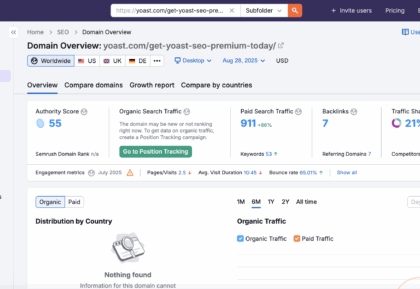The Power of ACL Data Analytics in Driving Business Insights
Data analytics has become an indispensable tool for organisations looking to extract valuable insights from their data. One powerful solution that is gaining popularity in the field is ACL data analytics. ACL, which stands for Audit Command Language, offers a robust platform for conducting data analysis, enabling businesses to uncover patterns, trends, and anomalies that can drive informed decision-making.
What is ACL Data Analytics?
ACL data analytics involves using the ACL platform to analyse large datasets and identify key information that can help businesses improve operations, mitigate risks, and enhance performance. By leveraging advanced data analysis techniques, organisations can gain a deeper understanding of their data and extract actionable insights that drive strategic decision-making.
The Benefits of ACL Data Analytics
There are several benefits to using ACL data analytics in a business setting. One of the primary advantages is the ability to conduct comprehensive data analysis quickly and efficiently. The ACL platform offers powerful tools for sorting, filtering, and visualising data, making it easier for analysts to identify patterns and trends.
Another key benefit of ACL data analytics is its ability to detect anomalies and discrepancies within datasets. By running automated tests and checks on large volumes of data, organisations can quickly identify potential errors or fraudulent activities that may otherwise go unnoticed.
Applications of ACL Data Analytics
ACL data analytics has a wide range of applications across various industries. In finance, organisations use ACL to conduct fraud detection analyses and ensure compliance with regulatory requirements. In healthcare, ACL helps identify patterns in patient data to improve treatment outcomes. Additionally, in manufacturing and retail sectors, businesses use ACL to optimise supply chain operations and enhance customer experience through targeted marketing campaigns.
Conclusion
As businesses continue to generate vast amounts of data, the need for effective data analytics tools like ACL becomes increasingly important. By harnessing the power of ACL data analytics, organisations can unlock valuable insights from their datasets and make informed decisions that drive growth and success.
Understanding ACL Data Analytics: Key Questions and Insights
- What is ACL in data analytics?
- How much does ACL Analytics cost?
- What does ACL software stand for?
- Who uses ACL software?
- How to use acl tool?
- What is ACL in internal audit?
- What is ACL software called now?
- What is an ACL certified data analyst?
What is ACL in data analytics?
ACL, short for Audit Command Language, is a powerful tool in the realm of data analytics. In data analytics, ACL refers to a platform that enables users to perform in-depth analysis on large datasets to uncover valuable insights. With ACL, analysts can manipulate and examine data efficiently, identify trends, anomalies, and patterns within the data, and ultimately make well-informed decisions based on the findings. By leveraging ACL in data analytics, organisations can streamline their processes, enhance operational efficiency, and gain a deeper understanding of their data assets for improved business outcomes.
How much does ACL Analytics cost?
The cost of ACL Analytics can vary depending on the specific needs and requirements of the organisation. ACL offers a range of pricing options, including licensing fees based on the number of users, modules required, and additional support services. It is recommended to contact ACL directly or visit their website for detailed pricing information and to discuss customised solutions that best suit the organisation’s data analytics needs.
What does ACL software stand for?
ACL software stands for Audit Command Language software. This powerful tool is widely used for data analytics, allowing businesses to conduct comprehensive analyses of their data to uncover valuable insights and drive informed decision-making. By leveraging ACL software, organisations can streamline their auditing processes, detect anomalies, and ensure compliance with regulatory requirements. The versatility and efficiency of ACL software make it an essential tool for businesses looking to enhance their data analysis capabilities and improve overall performance.
Who uses ACL software?
Organisations across various industries and sectors utilise ACL software to enhance their data analytics capabilities. Professionals such as auditors, data analysts, compliance officers, and internal control specialists commonly use ACL to perform in-depth analysis of large datasets. Additionally, finance professionals leverage ACL for fraud detection and risk assessment, while healthcare providers utilise the software to improve patient outcomes through data-driven insights. Ultimately, anyone looking to extract valuable information from their data and make informed decisions can benefit from using ACL software.
How to use acl tool?
Understanding how to use the ACL tool is essential for leveraging its powerful capabilities in data analytics. To effectively utilise the ACL tool, users typically begin by importing their datasets into the platform. From there, they can apply various data analysis techniques such as filtering, sorting, and performing tests to extract meaningful insights. ACL provides a user-friendly interface that allows for easy navigation and manipulation of data, making it accessible even to those with limited technical expertise. By familiarising oneself with the functionalities of the ACL tool and exploring its features through hands-on practice, users can harness its full potential in uncovering valuable information and driving informed decision-making processes.
What is ACL in internal audit?
ACL, or Audit Command Language, plays a crucial role in internal audit by providing a powerful platform for conducting data analysis and extracting valuable insights from financial and operational data. In the context of internal audit, ACL enables auditors to perform detailed analysis on large datasets to identify patterns, anomalies, and potential risks within an organisation’s processes. By leveraging ACL in internal audit practices, auditors can enhance the effectiveness of their audits, improve risk assessment procedures, and ensure compliance with regulatory standards. Overall, ACL serves as a valuable tool for internal auditors looking to streamline their audit processes and drive better decision-making based on data-driven insights.
What is ACL software called now?
The software previously known as ACL is now called Galvanize. Galvanize offers a comprehensive suite of data analytics tools, including the familiar functionalities that users have come to rely on from the ACL platform. With its rebranding to Galvanize, the software continues to empower businesses with robust data analysis capabilities, enabling them to extract valuable insights and drive informed decision-making processes effectively.
What is an ACL certified data analyst?
An ACL certified data analyst is a professional who has undergone training and certification in using the ACL platform for data analysis. This certification validates the individual’s proficiency in conducting data analytics, identifying trends, anomalies, and patterns within datasets, as well as leveraging advanced tools and techniques offered by ACL. An ACL certified data analyst is equipped with the skills and knowledge to extract valuable insights from data, helping businesses make informed decisions based on accurate and reliable information.






